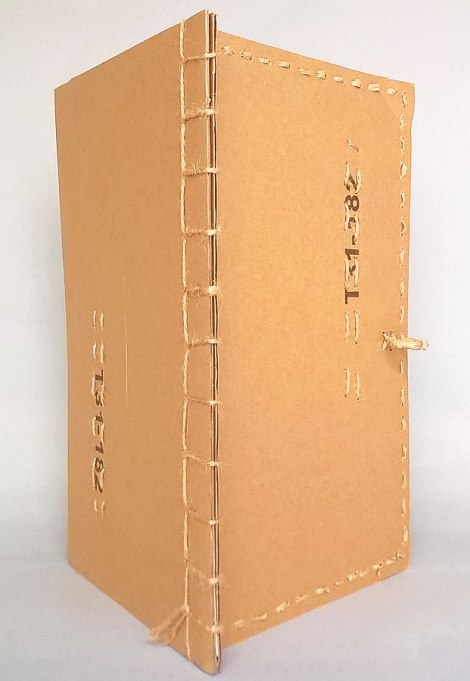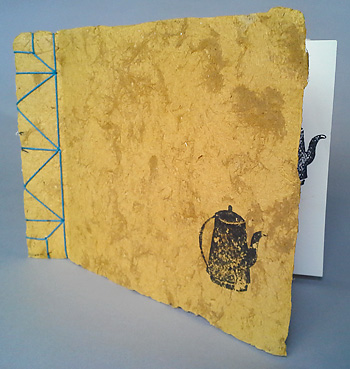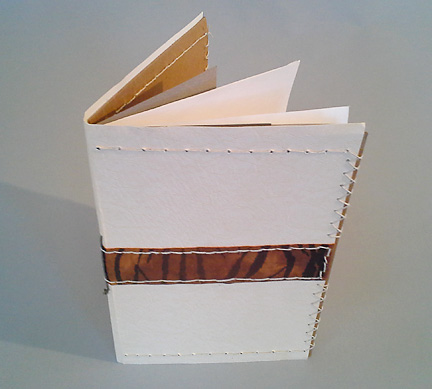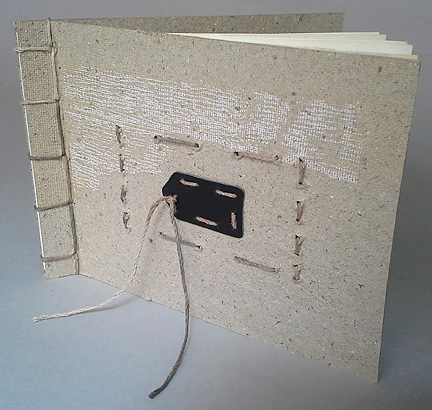“Building Your World”
In a recent program at the Westwood Branch Library, children created their own worlds inspired by architecture, repurposed materials, and their own imaginations!
Participants engaged concepts of architecture, design, engineering, construction and environment, finding new uses for cast-off items, and recycling what could have been trash into fanciful constructions of joy, wit, whimsy…and always, creativity.
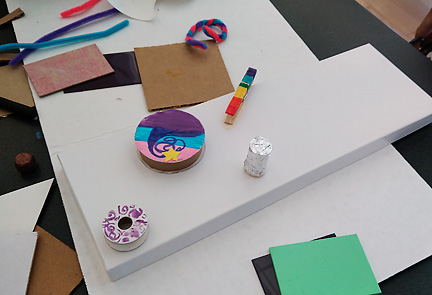 Creating and using color…pipe cleaners, a wooden clothes pin, plastic and paint samples and cardboard ribbon spools!
Creating and using color…pipe cleaners, a wooden clothes pin, plastic and paint samples and cardboard ribbon spools!
 Arranging a wooden cutout (left over from a furniture-making class) and a pipe cleaner on a project board…ready to add other materials.
Arranging a wooden cutout (left over from a furniture-making class) and a pipe cleaner on a project board…ready to add other materials.
 Another young maker using the same wooden cutout in a whole different way. Clothespins and empty spools become hooks and clips for jewelry.
Another young maker using the same wooden cutout in a whole different way. Clothespins and empty spools become hooks and clips for jewelry.
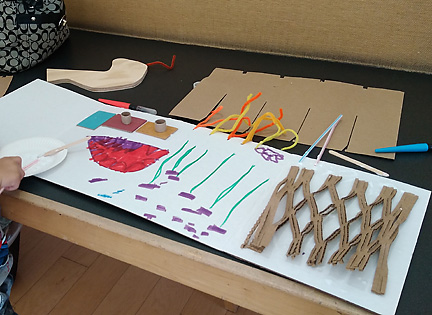 Drawing combined with unique packing material and plastic tiles topped by small spools form the visual structure for this young boy’s world.
Drawing combined with unique packing material and plastic tiles topped by small spools form the visual structure for this young boy’s world.
 Here the project board is used as a flat base, and din=mension is added with a gift box top, straws, and yet another employment of empty spools.
Here the project board is used as a flat base, and din=mension is added with a gift box top, straws, and yet another employment of empty spools.
Participants worked flat on tables in the library’s multipurpose/community room, and most came at the start of the program, and stayed for its 1.5 hour entirety, allowing them time to truly play, design, experiment and build.
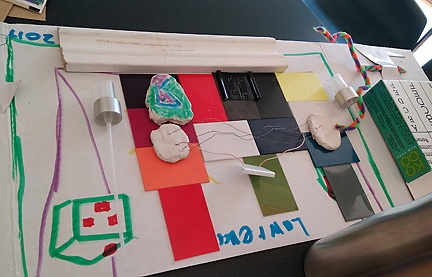 Lawrence worked what looked to be upside down on his project,
Lawrence worked what looked to be upside down on his project,
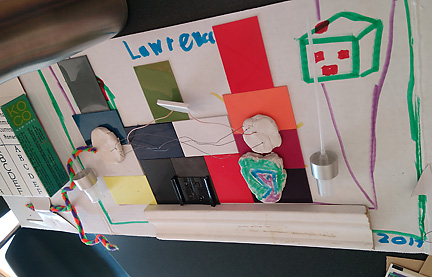 perhaps turning his project board base around to see how it was developing from both vantage points.
perhaps turning his project board base around to see how it was developing from both vantage points.
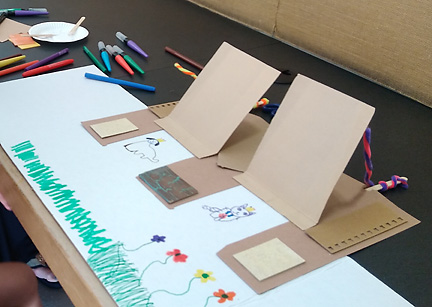 This lovely world of color, flowers animals and doors/flaps which lift up was created by a young girl of preschool age, working quietly in a corner with her mother. She made beautiful use of the materials, arranging cardboard, tile and paint samples and pipe cleaners to beautiful effect. I would love to visit this world for a bit!
This lovely world of color, flowers animals and doors/flaps which lift up was created by a young girl of preschool age, working quietly in a corner with her mother. She made beautiful use of the materials, arranging cardboard, tile and paint samples and pipe cleaners to beautiful effect. I would love to visit this world for a bit!
It was exciting to see children visualize wolds in real time, then create them concretely. I have to believe it was wonderful and empowering for the children and their adults as well.

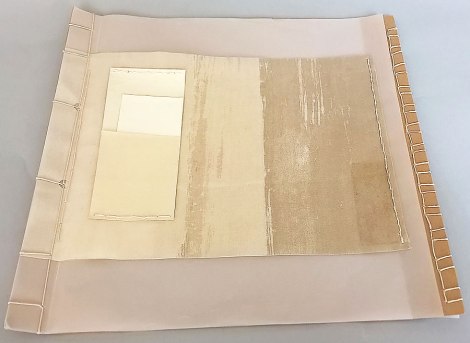
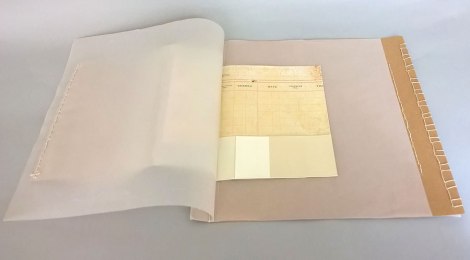
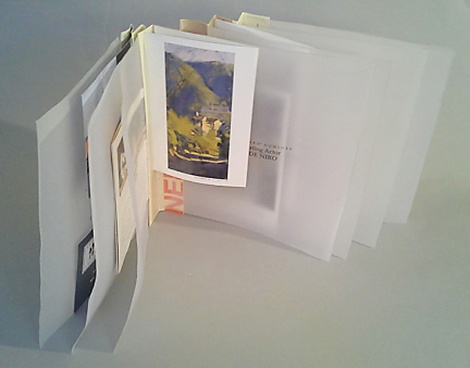 “Folded fan” flag book, repurposed brochure, vellum (?), photo corners, brochures and postcards.
“Folded fan” flag book, repurposed brochure, vellum (?), photo corners, brochures and postcards.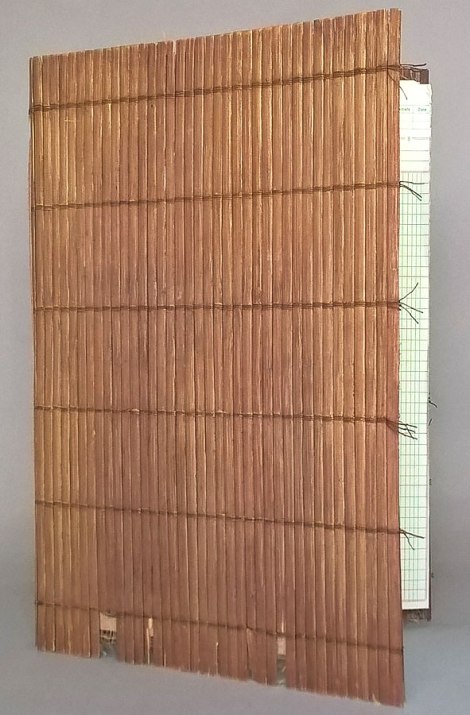 When a discarded placemat just screams “book”
When a discarded placemat just screams “book”
